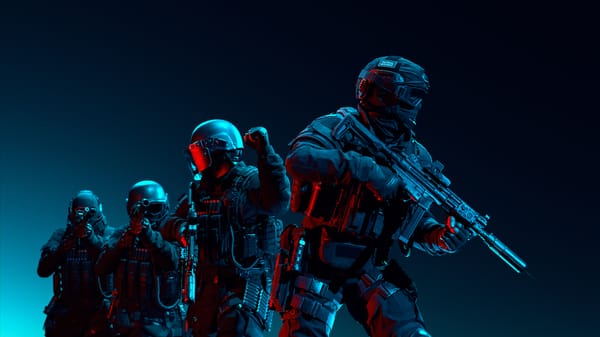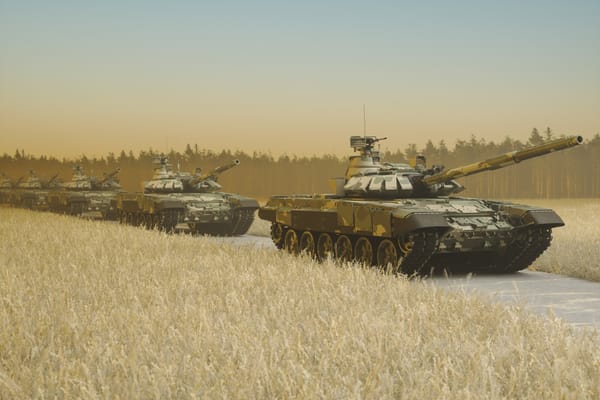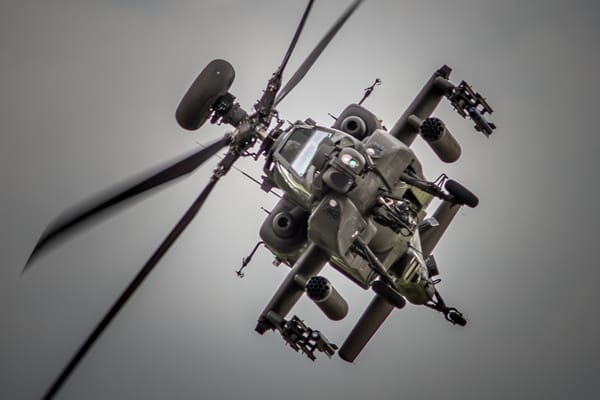🇫🇷 France's Nuclear Strategy

France’s nuclear strategy, known as the Force de dissuasion, is a cornerstone of the country’s defense policy and national security doctrine. Guided by the principle of “strict sufficiency,” France maintains a relatively modest but technologically sophisticated nuclear arsenal designed to deter potential adversaries from attacking French territory or vital interests. This strategy is based on the premise that even a limited number of nuclear weapons, if survivable and capable of penetrating enemy defenses, can impose unacceptable costs on any aggressor.
France’s nuclear forces today are composed of two main components:
1. Submarine-Launched Ballistic Missiles (SLBMs): Four Triomphant-class nuclear-powered ballistic missile submarines (SSBNs), each equipped with M51 ballistic missiles.
2. Air-Based Component: Nuclear-capable aircraft (currently the Rafale) armed with ASMP-A (Air-Sol Moyenne Portée Amélioré) cruise missiles.
Overview of the Current Strategy
Credible Deterrent: France aims to maintain a credible second-strike capability, ensuring at least one SSBN is always on patrol.
Adaptation and Modernization: France regularly modernizes its nuclear delivery systems and warheads. Modernization efforts include upgrades to the M51 missile variants and the integration of improved warheads.
• Independent Decision-Making: France emphasizes full autonomy in its nuclear decision-making. Although France cooperates with NATO, its nuclear forces remain under national command.
• Limited but Sufficient Arsenal: French doctrine centers on “strict sufficiency,” avoiding a quantitative arms race while retaining a robust deterrent.
• Political Framework: The President of the Republic holds the sole authority to order the use of nuclear weapons. Decisions on alert status and engagement are tightly controlled under this centralized command structure.
Timeline of Major Developments
2020s: Modernization Initiatives and Strategic Reviews
2021. Modernization of the M51 Missiles. The French Ministry of the Armed Forces confirmed upgrades to the M51 ballistic missiles to improve their range and accuracy. This modernization program included enhanced warheads and improved penetration capabilities.
2020. New Strategic Defense Review. In a defense review, France reaffirmed its commitment to nuclear deterrence as the ultimate guarantee of national security. The review called for continued investment in submarine and airborne deterrent forces.
2010s: Consolidation of Post-Cold War Doctrine
2018. Rafale Nuclear Certification. The Rafale fighter underwent full certification to carry the upgraded ASMP-A cruise missile, reinforcing the airborne component of France’s nuclear force.
2015. M51.2 Testing. Successful test launches of the upgraded M51.2 ballistic missile were conducted, enhancing the reliability and performance of France’s sea-based deterrent.
2013 – Livre Blanc sur la Défense et la Sécurité Nationale
The 2013 White Paper on Defense and National Security reaffirmed nuclear deterrence as a national priority, with emphasis on maintaining submarine-based forces and a modernized air component.
2000s: Transition and Adjustments in the Deterrent Posture
2008 – White Paper on Defense
The 2008 White Paper underlined the importance of the nuclear deterrent for French sovereignty and endorsed continued modernization of strategic forces.
• 2006 – Nuclear Policy Speech by President Chirac
President Jacques Chirac explicitly linked nuclear deterrence to the protection of French “vital interests,” potentially extending protection to allies. This marked a subtle evolution in strategic thinking toward broader deterrent coverage.
1990s: Post-Cold War Adjustments and Disarmament Efforts
• 1996 – Dismantling of Land-Based ICBMs
President Jacques Chirac announced the dismantling of France’s land-based ballistic missile silos and closed the nuclear test site in the Pacific, reflecting a shift to a fully sea- and air-based deterrent.
• 1992–1995 – End of Atmospheric Nuclear Testing
France halted atmospheric nuclear testing in the Pacific in 1992 and conducted its last underground test in 1995, thereafter transitioning to computer simulations and subcritical experiments for warhead maintenance.
1980s: Force Modernization and Emergence of Triomphant Class
• 1989 – Start of Triomphant-Class SSBN Program
Construction began on the Triomphant-class SSBNs, intended to replace older Redoutable-class submarines. This modernization solidified the sea-based deterrent as France’s primary strategic force.
• 1986 – ASMP Missile Deployment
The Air-Sol Moyenne Portée (ASMP) cruise missile entered service, significantly improving the flexibility and range of France’s aerial nuclear forces.
1970s: Establishing an Independent Nuclear Arsenal
• 1979 – Introduction of the Pluton System
The short-range Pluton tactical nuclear missile system was deployed, reinforcing France’s ability to deter threats on the European continent.
• 1974–1975 – Expansion of Redoutable-Class SSBN Fleet
Additional Redoutable-class submarines entered service, solidifying the maritime leg of the French deterrent and ensuring continuous at-sea deterrence.





